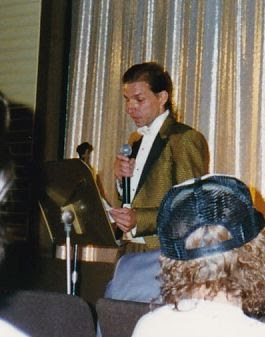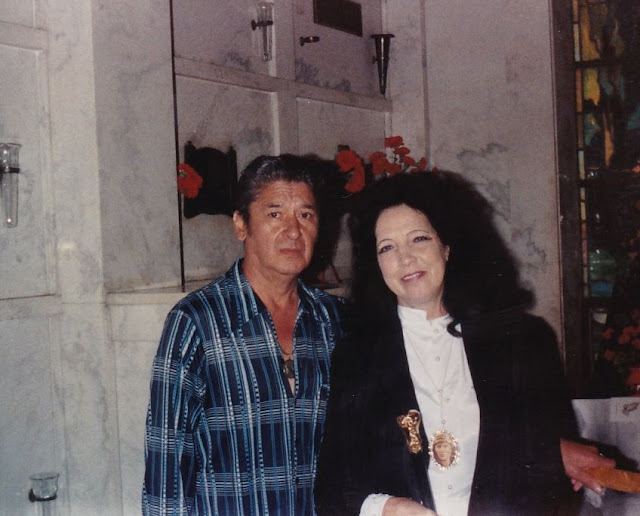In the past I have written about the first burial at Chicago's historic Rosehill cemetery:
and the first burial at Skokie's Memorial Park Cemetery:
A friend recently asked me if I was aware of the first burials at Acacia Park Cemetery, the formerly Masonic cemetery in Chicago. They then told me the story of Mary M. Lord and her husband Frank who were both originally buried elsewhere but ended up being the first and second burials at Acacia Park. I shall now pass the story along to you.
Before we look at their lives together we must look at them separately. We'll start with Frank.
Frank Jerome Lord was born in February, 1859 in New York, the son of Jerome S. Lord (1833-1909) and Mary Elizabeth Kline (1833-????). Jerome and Mary had six sons: Frank J. (1859-1909), Luther S. (1861-1926), Charles V. (1863-1946), Egbert Lockhart (1868-1951), Robert Hubbard (1874-1945) and Leroy Chetwynd (1873-1944).
Frank's first US Census was in 1860. The record shows the Lord family as living in Castile, New York. Jerome Lord was a carpenter; Mary Lord was a Milliner, and Frank was of course a baby. The family had personal effects worth $85.00.
By the time of the 1870 US Census the Lord family was living in Almond, New York. Jerome was still a carpenter; Mary was "Keeping House." Frank was 12 years-old and "at school." Frank was now joined by Luther, Charles and Egbert. The family owned real estate worth $500.00 and personalty worth $2,500.00.
By the 1880 US Census, Frank had left home. He was a "Farm Laborer" working on a farm in Jewett, New York, and was a Boarder with the family of Horace W. Towner.
In 1886 Frank Lord married Mary M. Myers in New York. The Bride was 23, the groom was 27.
Now let's take a look at Mary.
Mary M. Myers was born in April, 1863 in Pennsylvania to Jacob J. Myers (1823-1882) and his wife Mary "Polly" Secrist (1832-1902).
Mary's siblings were: John Abner (1846-1932), Elizabeth Delray - Mrs. Samuel B. Furry (1848-1883), Jacob Martin (1850-1868), Anne Marie (1852-1853), Mary Catherine (1854-1854), Alvey Nelson (1857-1859), Annie E. - Mrs. Henry B. Martin (1860-1900), Samuel A. (1865-1886), Eulalia Myrtle - Mrs. Edward N. Pedicord (1867-1936), and William Newton (1869-1877).
Mary's first appearance would have been in the 1870 US Census. The family was living in Warren, Pennsylvania. Mary's father said he was a "Clerk in a Store." He had real estate worth $2,000.00 and personalty worth $300.00. The real estate was in Mary's mother's name.
The 1880 US Census would be Mary's last census before she married Frank Lord. The family was now living in Indian Spring, Maryland. Mary's father listed his occupation as "Merchandising."
As stated above, Mary Myers married Frank J. Lord in New York. The Bride was 23, the groom was 27. History does not tell us how Mary and Frank met, or how long they "courted" before they decided to get married.
The 1890 US Census for that area is lost but a lot had taken place for the Lords by the time of the 1900 US Census. Frank and his family are living at 1063 Jefferson Avenue in Tyrone, Pennsylvania.
Forty-one year old Frank is a "Commercial Salesman of Shoes." Along with Frank are his wife, thirty-six year old Mary, and their two daughters, thirteen year old Edith Elizabeth - Mrs. Adolph C. Becker (1886-1978) and ten year old Margaret - Mrs. Colman J. O'Neill (1889-1967).
Frank J. Lord died in Zion, Illinois on April 1, 1909 of pulmonary tuberculosis. He was 50 years old. His father, Jerome Lord, had died just a short time before - on February 21, 1909. Jerome was 76. Here is Frank's Death Certificate:
It says that he was a "traveling salesman" and that he had lived in Illinois for 8 years, meaning that the Lord family moved to Illinois in 1901 - not long after they answered the 1900 US Census in Pennsylvania. .
Now the mystery of Frank and Mary Lord deepens. I was unable to uncover any information about how they came to be in Illinois at all let alone in Zion, Illinois where Frank died. They are not listed in the Zion City Directory for 1908 (or any previous or subsequent directory for Zion, for that matter). Neither Frank nor Mary were from Illinois, and their daughters did not get married until years later so Frank and Mary did not follow one of their daughters to Illinois. This is one of the frustrating parts of genealogy research. Sometimes you have questions that you are never able to answer. But that makes each genealogy search a treasure hunt and adds to the fun (and frustration) of this pursuit.
Frank J. Lord was laid to rest in the Lake Mound cemetery in Zion, Illinois.
After Frank's death, Mary and their daughters stayed in Illinois, but not in Zion. The 1910 US Census shows them living in the City of Chicago at 2314 N. Powell Street (now Campbell).
Mary reported that she was 45 years old and a widow. She was not employed. Living with her was 24 year old Edith who said she was a "Stenographer for a Publishing House." Also there was 21 year old Margaret who was a "Bookkeeper for a Publishing House". Living with the Lords as Boarders were 45 year old David B. Grigg and 25 year old Mary Thingaard.
But life was not all sad for the family of Frank Lord. His daughter Margaret Lord married Colman Jerome O'Neill (1887-1965) on June 4, 1916 in Chicago. The bride was 26; the groom was 29. Colman O'Neill was a draftsman for a telephone manufacturer by trade.
In the 1920 US Census the family was down to Mary and Edith. they were living at 4032 West Irving Park Boulevard in Chicago:
Mary is 58 years old and a widow. She is now working as a Practical Nurse. Edith is 31 years old and a stenographer in a law office.
Happy news again - on June 29, 1921 Edith Lord married Adolph Charles Becker (1881-1980) in Chicago at the First Lutheran Church of Logan Square:
Mary Lord died January 4, 1923 at 2827 N. Mozart in Chicago:
The cause of death was a cerebral hemorrhage complicated by arteriosclerosis. The family did not bury her next to her husband in Zion, instead they buried her in Montrose Cemetery in Chicago - at least temporarily:
Here is her death notice from the Chicago Tribune from January 5, 1923:
So by January, 1923 Frank and Mary Lord are both deceased. Their remains are separated - his in Lake Mound Cemetery in Zion, hers in Montrose Cemetery in Chicago. Normally this would be the end of the story. But I said they were the first (and second) people interred at Acacia Park Cemetery in Chicago. How did that come to be?
Back in 2015 I told the story of Street Lightfoot, the founder and owner of Acacia Park Cemetery:
Just to recap, in the late 1910s the Masonic Fraternity of Chicagoland decided to develop cemeteries that would be limited to Masons, members of the Eastern Star and their families. Street Lightfoot was hired to accomplish this because of his cemetery expertise and background in Masonry. Lightfoot developed the Acacia Park Cemetery on Chicago's north side, and the Cedar Park Cemetery on Chicago's far south side for the Masons.
Street Lightfoot knew the neighborhood along West Irving Park Road just outside the Chicago city limits very well, having worked for the Irving Park Cemetery. When the Masons hired Lightfoot to develop a north side cemetery, he made arrangements to purchase 83 acres of sloping land right across the street from the Irving Park Cemetery. The land is bounded by Berteau on the north, Irving Park, on the south, Ozanam on the east and Pioneer on the west.
The Acacia Park Cemetery was opened in 1922. Here's a photo from the groundbreaking of the cemetery:
First of all, we can assume that someone in the Lord family was a Mason. In the early years interment at Acacia Park was limited to Masons and their families. Well, it turns out that Edith's husband A.C. Becker was a Mason. Here's a mention of that in the Chicago Tribune of April 10, 1932:
A.C. Becker decided that the time to buy graves at Acacia Park was before they were needed - in fact before the cemetery even officially "opened." In addition to getting a good price, Becker would be helping fellow Mason, Street Lightfoot in his new financial venture. Perhaps he suggested it, perhaps his wife Edith was the one to bring it up but they decided to buy four graves and have Edith's parents disinterred from Zion and Montrose and have them reinterred next to them at Acacia Park. Frank had been dead since 1909 but Mary was only recently deceased. Perhaps Mary had not been buried at Montrose Cemetery; perhaps she had been kept in Montrose's Receiving Vault until the graves were ready. Years ago all cemeteries had "Receiving Vaults" which were places bodies were kept until they were ready for interment. Sometimes they could not be buried because the ground was frozen; perhaps the deceased was waiting for a family mausoleum to be constructed. Receiving vaults were locked storage, often in the side of a hill, so that the vault would stay cool while the bodies were waiting for their final disposition. Acacia Park Cemetery was so new in 1923 they may not have even had their own Receiving Vault. Here are photos of the Receiving Vault at Rosehill Cemetery to give you an idea of what they are like:
A.C. Becker and his wife bought 4 graves in the Barberry Section of Acacia Park. Block 3, Lot 2, Graves 1-2-3-4. They saved graves 3 and 4 for themselves, and made arrangements to have Frank moved down from Zion, and Mary from Montrose.
Frank Lord and his wife Mary were finally laid to rest in their new graves in the new Acacia Park Cemetery on February 26, 1923. Here is a photo from Mary's interment on that day:
Here are their graves almost 100 years later:
Mary Lord was Interment #1 at Acacia Park:
And their son-in-law A.C. Becker in 1980:
Here are all four of them together:
Frank and Mary were leaders of a long parade. Acacia Park Cemetery recently had their 300,000th interment.
So now you know the story of the first burials at Acacia Park Cemetery. Frank and Mary Lord were just "regular folks" who went about living their lives as best they could. I think everyone at one time or another thinks about the possibility of reincarnation. Many people have actually gone through "age regression" to see who they had been in their past lives. Did you ever notice that none of these people were just "regular folks" in their past lives? You hear a woman confess that she discovered that she was Cleopatra in a past life. But no one every says that in their past life they were the person who picked up the dung dropped by Cleopatra's camels.
Many of us when we start tracing our family trees hope to find that we are related to someone famous or someone infamous. But the fact is that most people are related to just plain folks. I have traced the Kramer side of my tree back to 1615 in Germany. I found nobody famous, nobody infamous. They were just regular people who were born, married, had children, and worked until they died. Just regular folks. Just like Mary and Frank Lord.
But actually Mary and Frank Lord are more "famous" in death than they were when they were alive, because Mary and Frank Lord were burials #1 and #2 in Acacia Park Cemetery in Chicago, and so we tell their stories today.
Mary and Frank Lord - just plain folks - may they rest in peace.






























































